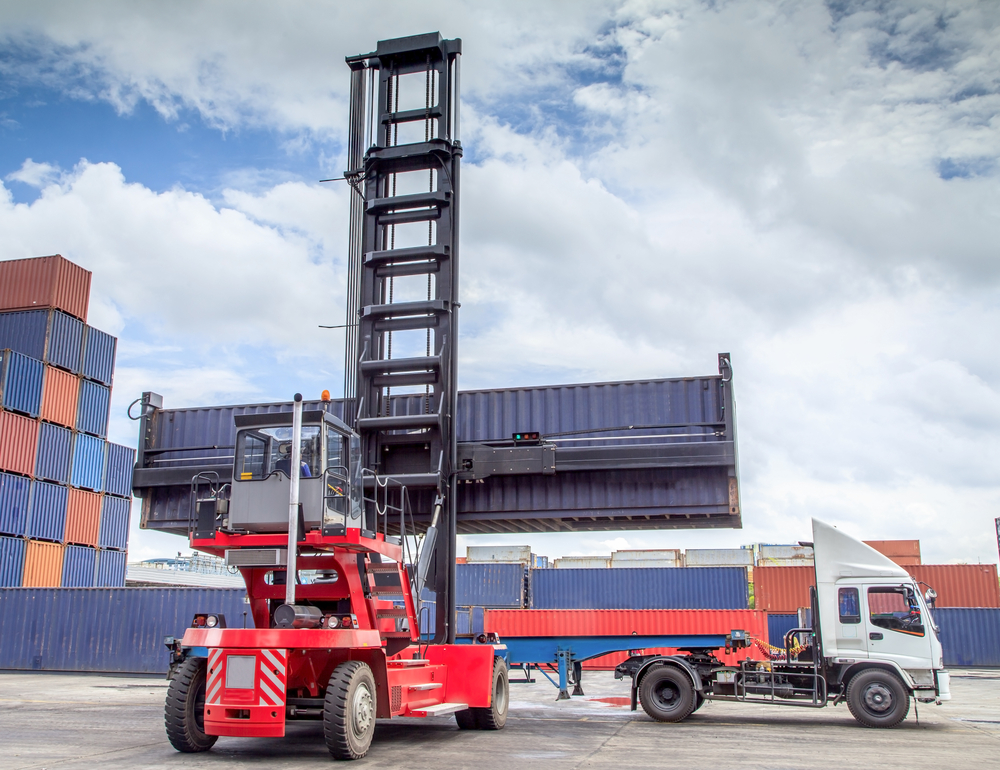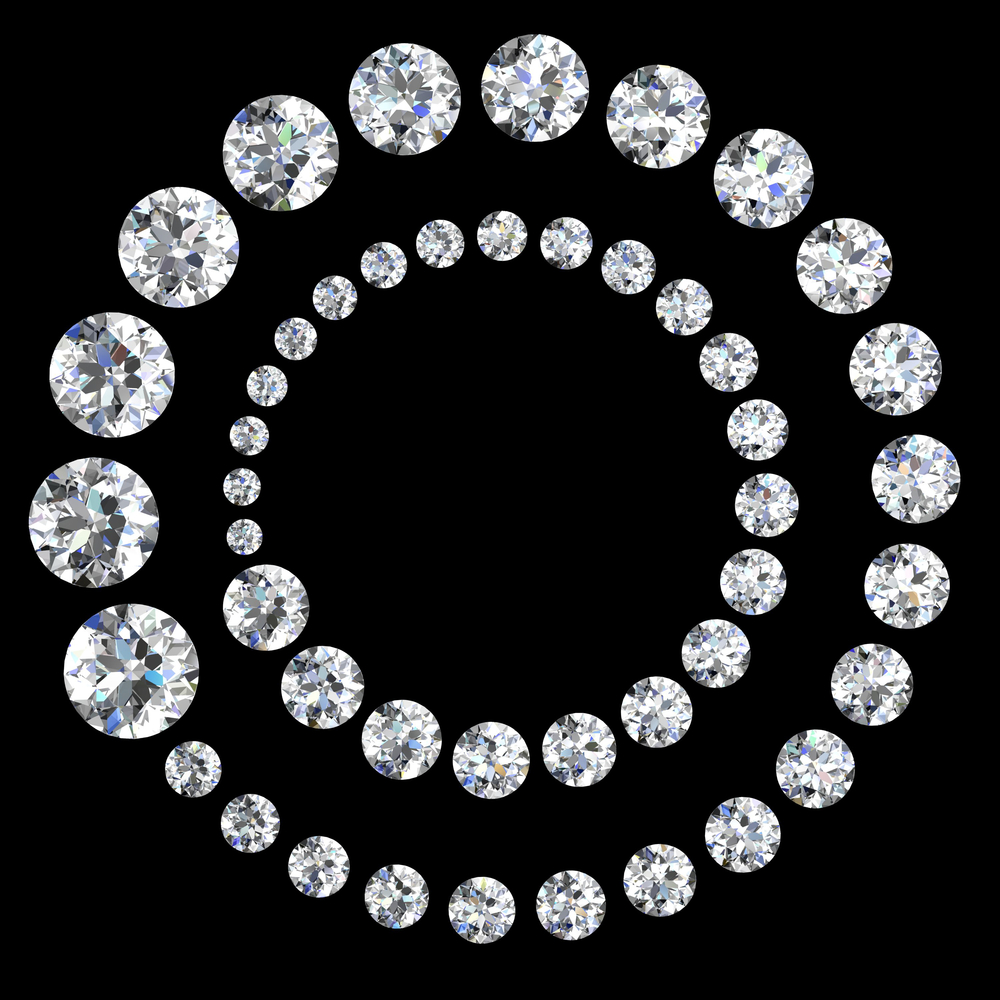Stainless Steel Strip, Sheet, Plate, Pipe ,Tube and Powder
(Supplement: High Nickel Alloy, Permalloy, Bi-metal, Titanium, Power Spring Strip, High Carbon Steel Strip, Plated Metal Strip, Electrogalvanized (Silver top) steel strip/ sheet, Perforated Metal, Silicon Steel Sheet for Electrical Use, Iron Chromium Cobalt Magnetic Alloys, Rare Earth Alloys, Neodymium (Nd) – Iron (Fe) – Boron (B) Magnetic Alloys, Ferrites, Soft Ferrites, Silicon Low Carbon Steel, Ferro – Nickel Alloy, Porcelain for insulators & Inorganic Matericals)
| 1.0 | Stainless Steel & Alloy Strip, Sheet & Plate | 1 |
| 1.1 | Definition of Stainless Steel | 1 |
| 1.1.2 | Comparison of different type of Stainless Steel | 2 |
| 1.1.3 | Advantage of Stainless Steel | 3 |
| 1.1.4 | Strength, Ductility and formability | 4 |
| 1.1.5 | Comparison specific gravity electricity, thermal conductivity, Thermal expansion and electrical resistance of stainless steel and other metals |
5 |
| 1.1.6 | Specific Gravity | 6 |
| 1.17 | Elasticity | 6 |
| 1.1.8 | Electrical resistance | 7 |
| 1.1.9 | Thermal conductivity | |
| 1.1.10 | Thermal Expansion | 8 |
| 1.1.11 | Comparison of mechanical propertities of selected stainless Steels, carbon steels and aluminum & bronze alloys |
9 |
| 1.1.12 | Alloy & Additive of Stainless Steel and its corrosion & other properties | 10 |
| 1.1.13 | Various Type of Stainless Steel Evolution from 304(18/8) | 11 |
| 1.1.14 | Conversion of Corrosion penentration rates for AISI-304 Stainless steel (density 7.87 g/cm3) and a corrosion rate of 0.0762mm (3/1000 inches)/yr. | 12 |
| 1.1.15 | Industrial standard of stainless steel | 13 |
| 1.1.16 | Types processing method, surface finished & features of stainless strip, sheet(Thickness under 20mm) & Plate (Thickness 20-200mm) to EN1088-2 : 1995 |
18 – 20
|
| 1.1.17 | Features of Stainless Steel | 22 |
| 1.1.18 | Metallurgists of Stainless Steel | 23 |
| 1.1.19 | Pioneer Stainless Steel makers | 24 |
| 1.1.20 | High-chromium Stainless Steel W442 | 25 |
| 1.2 | Production Method | 26 |
| 1.2.1 | Production Method | 26 |
| 1.3 | Manufacturing flow chart of Stainless Steel Strip/ Sheet/ Plate | 27 |
| 1.4 | Explanations of Stainless Steel Manufacturing Process | 28 |
| 1.5 | Manufacturing Process in Illustration | 30 – 34 |
| 1.5.1 | Melting and Casting flow-chart | 30 |
| 1.5.2 | Slabbing and Slab Conditioning flow-chart | 31 |
| 1.5.3 | Hot Rolled flow-chart | 32 |
| 1.5.4 | Cold Rolled flow-chart | 33 |
| 1.5.5 | Shearing & Slittering | 34 |
| 1.6 | Mill’s Inspection Certificate | 35 – 36 |
| 1.7 | Corrosion of Metal | 38 – 43 |
| Definition of Corrosion | 38 | |
| Different Kinds of Corrosion | 38 | |
| Law of ” Faraday” | 38 | |
| Corrosion Cell | 38 | |
| Environmental Cell | 39 | |
| Type of Corrosion | 39 | |
| How Natural Environment, water, sea water, soil and concret affect metal ? | 39 – 41 | |
| The Rate of Corrosion of Metal made by Fresh Water, Sea Water and Soil | 41 | |
| The Method of Calculation of Corrosion | 41 | |
| The Weak Point of Metal is the Starting Point of Corrosion | 41 – 43 | |
| How Temperature affects Corrosion | 41 | |
| Crystal Defects | 41 | |
| Cold Working | 42 | |
| Grain Structure & Inter-granular Corrosion | 42 | |
| Grain Shape | 42 | |
| Solution of Corrosion Resistance | 42 | |
| Purity | 42 | |
| Additive on Metal | 42 | |
| Heat Treatment | 43 | |
| 1.8 | Rusting, Corrosion Resistance of Stainless Steel & Titanium against Chemicals | 45 – 47 |
| Rusting | 45 | |
| Corrosion Resistance of Stainless Steel & Titanium against Chemicals | 45 – 47 | |
| 1.9 | Classification, Corrosion Resistance & Heat Resistance of Stainless Steel | 49 – 50 |
| Chrome Stainless Steel | 49 | |
| Martensite | 49 | |
| Low Carbon Martensite | 49 | |
| Ferrite Stainless Steel | 49 | |
| Nickel Chrome Stainless Steel | 50 | |
| Precipitation Hardening Stainless Steel | 50 | |
| Fe / Mn / Al Stainless Steel | 50 | |
|
1.10 |
Nickel Allergy | 53 -55 |
| Mechanism of Nickel Allergy | 53 | |
| Nickel Emission and Metal Corrosion | 53 – 55 | |
| 1.11.0 | Magnetic | 59 – 65 |
| 1.11.1 | Magnetic Property & Stainless Steel | 55 |
| Permeability after Cold Working | 59 | |
| 1.11.2 | Magnetism | 60 |
| 1.11.2a | Soft Magnetic | 60 |
| 1.11.2b | Hard Magnetic | 60 |
| 1.11.3 | Magnetic Fields | 60 – 61 |
| 1.11.4 | Magnetic Induction | 61 |
| 1.11.5 | Magnetic Permeability | 61 |
| 1.11.6 | Magnetic Susceptibility | 61 – 62 |
| 1.11.7 | Magnetic Force , Field & Electron | 62 |
| 1.11.8 | Diamagnetism, Paramagnetic, Ferromagnetism | 63 |
| Diamagnetism | 63 | |
| Paramagnetic | 63 | |
| Ferromagnetism | 63 | |
| Comparision of Diamagnetic / Paramagnetic / Ferromagnetic | 64 | |
| 1.11.9 | Antiferromagnetism | 65 |
| 1.11.10 | Ferrimagnetism | 65 |
| 1.12 | How to select Stainless Steel | 69 – 70 |
| 1.13 | Heat Treatment Hardening | 73 – 77 |
| Quenching & Hardening | 73 | |
| Normalizing | 73 | |
| Annealing | 73 | |
| Full Annealing | 73 | |
| Diffusion Annealing | 74 | |
| Low Temperature Annealing | 74 | |
| Process Annealing | 74 | |
| Spheroidizing Annealing | 74 | |
| Bright Annealing | 74 | |
| Other Annealing Method | 74 | |
| Quenching | 74 – 75 | |
| Time Quenching | 75 | |
| Austempering | 75 | |
| Marquenching | 75 | |
| The rate of Cooling and Quenching Media | 75 – 76 | |
| Tempering | 75 – 76 | |
| Surface (case ) Hardening | 76 | |
| Carbonizing | 76 | |
| Nitriding | 77 | |
| Plasma – nitriding | 77 | |
| Gas Caburizing | 77 | |
| Liquid Salt Bath | 77 | |
| 2.0 | Standard of General Use Stainless Steel Strip / Sheet & Plates | 79 – 87 |
| 2.1 | Stainless Steel – Type, Industrial Standard, Chemical Composition, Characteristic & End Usage of the most commonly used Stainless Steel | |
| 2.2 | Mechanical Properties | 89 – 95 |
| 2.2.1 | Mechanical Properties of Spring use Stainless Steel (301, 304, 631 CSP) |
89 |
| 2.2.2 | Mechanical Properties of Thin Stainless Steel (Thickness From 0.3mm to 2.9mm) – strip/sheet | 90 |
| 2.2.3 | Mechanical Properties of Austenitic Stainless Steel Under Solution Treatment Conditions(SUS G4305) | 91 |
| 2.2.4 | Mechanical Properties Under Annealed Condition Of Stainless Steel | 92 |
| 2.2.5 | Acid and Corrosion Resistance of Stainless Steel & High Nickel Alloys(0.1g/m2/hr or less) | 93 – 94 |
| 2.2.6 | High Temperature Corrosion Resistance of Stainless Steel (Against Gas, Salt-bath, Sodium and Water) | 95 |
| 2. 3 | Classification of Foil, Strip, Sheet & Plate by Thickness | 96 |
| 2.4.1 | General Specification of Tension Annealed Stainless Steel Strips | 97 – 98 |
| Coil Set | 97 | |
| Camber | 97 | |
| Cross Bow | 97 | |
| Twist | 97 | |
| Waving at the Edge | 97 | |
| Dents and Pitting | 97 | |
| Lines | 97 | |
| Tension Annealed Material | 97 | |
| Grease, Oil and Rusting | 97 | |
| Interleaf Paper | 97 | |
| Inner Core Diameter | 97 | |
| Mill’s Certificate | 97 | |
| Picture Description | 98 | |
| 2.4.2 | Designation of SUS Special Used Stainless Steel | 99 |
| 2.5 | Surface Finish (No.1, No.2D, No.2B, No.3, No.4, BA, DF, HL, No.8,Emboss, Coloured, Pre-coated) | 100 – 101 |
| 2.6 | Surface Protection film
S.P.V-W SPP |
102 |
| 2.7 | Edge Finish | 103 |
| 2.8 | Available Size & Tolerance | 104 – 107 |
| 2.8.1 | Foil-Available size & Tolerance | 104 |
| 2.8.2 | Thin Strip & sheet(Thickness from 0.3mm to 2.9mm)Available size & Tolerance | 105 |
| 2.8.3 | Stainless steel plate, heavy gauge | 106 |
| 2.8.4 | Stainless Steel Plate- Heavy Gauge | 107 |
| 2.9 | Marking and Packing | 108 – 110 |
| 2.9.1 | Strip Packing | 108 |
| 2.9.2 | Sheet Packing | 109 |
| 2.9.3 | Plate Marking & Packing | 110 |
| 2.10 | Slittering & Shearing services | 111 |
| 3.0 | Spring Stainless Steel | 113 – 120 |
| 3.1 | Stainless Steel for Spring Use | 113 |
| 3.1.1 | 301 Stainless Steel used for Spring in brief | 113 |
| 3.1.2 | Other Stainless Steel used for Spring (Details :17.0 – page 198) |
113 |
| 3. 2 | Cold Rolled Stainless Steel Strip for Springs JIS G4313 | 114 |
| 3.2.1 | Class and Grade | 114 |
| 3.2.2 | Hardness, Bend, Tensile Strength, Proof Stress and Elongation(JIS G4313) | 116 – 117 |
| 3.2.3 | Mechanical Properties of SUS301 and SUS301L under Thermal Refining Rolled Conditions | 118 |
| 3.2.4 | Camber – Permissible Maximum Value (Width over 10mm) | 118 |
| 3.2.5 | Flatness Formular | 118 |
| 3.2.6 | Flatness Test | 119 |
| 3.2.7 | Hardness Measurement Under Constant Temperature Before “V” + “W” Bend Test | 119 |
| 3.2.8 | V Bend Test | 119 |
| 3.2.9 | W-Bend Test | 120 |
| 4.0 | Deep Drawing | 123 – 126 |
| 4.1 | General | 123 |
| 4.2 | Deep Drawing | 123 |
| 4.3 | Mass Formula | 124 |
| 4.4 | Specific Gravity of Stainless Steel | 125 |
| 5.0 | Stainless Steel Metal Injection Powder | 127 – 131 |
| 5.1 | Powder Metallurgy | 127 |
| 5.1.1 | Traditional Powder Metallurgy | 127 – 128 |
| Moulding method | 127 | |
| Briqutting | 127 | |
| Sintering | 127 | |
| Shaping | 127 | |
| Impreguation | 127 | |
| Sintering Temperature | 128 | |
| 5.1.2 | Stainless Steel Metal Injection Powder | 128 – 129 |
| Advantage of Metal Injection | 128 | |
| Metal Injection Moulding Flow Chart | 128 | |
| Metal Injection Sintering Products | 128 | |
| Comparison of different kinds of Metal Injection Moulding material and their Mechanical Property | 129 | |
| Comparison and Flow Chart of MIM and Conventional Powder Metallurgy | 130 | |
| Sintering temperature / sintering time and mechanical properties relation | 131 | |
| 6.0 | Claded, Inlet, Plated Stainless Steel Strip | 137 – 143 |
| Material | 137 | |
| Dimension | 137 | |
| Under Plating | 137 | |
| Single Side Plating | 137 | |
| Cladding | 138 | |
| Plating | 139 | |
| Flow Chart of Claded & Plated Metal | 139 | |
| Other Base Metals’ Claded Metal | 140 – 141 | |
| Plating Position & Example | 142 | |
| Coiling Direction | 142 | |
| End Usage | 143 | |
| 7.0 | Stainless Tube & Pipe | 145 – 148 |
| 7.1 | Seamless Tube/Pipe & Seamed Tube/Pipe | 145 |
| 7.2 | Precision Tube | 147 |
| Ordering | 147 | |
| Features | 147 | |
| Production Procedures | 147 | |
| End use or purpose | 148 | |
| Materials | 149 | |
| Outside diameter & wall tickness | 150 | |
| Welded Tubing | 150 | |
| Dimensional Tolerances | 151 | |
| 7.3 | Pipe & Tube of General Use | 153 – 158 |
| End Usages | 153 | |
| Pipe & Tube Manufacturing Flow Chart | 153 | |
| 304 Round Pipe Weight Table | 154 | |
| 430 Round Pipe Weight Table | 154 | |
| Rectangular Pipe Weight Table | 155 | |
| Square Pipe Weight Table | 155 | |
| High Frequency Welding Round Pipe Sizes | 156 | |
| Argon Arc Welding Round Pipe Sizes | 156 | |
| Square Pipe Sizes | 157 | |
| Tolerance | 158 | |
| Round Pipe | 158 | |
| Square Pipe | 158 | |
| 8.0 | Decorative Stainless Steel – Mirror/Etching Finished Stainless Steel Sheet | 160 |
| 8.1 | Manufacturing Process | 161 |
| 8.2 | Decorative Stainless Steel | 162 -163 |
| 0Mirror Finish – The ultimate for class and elegance | 162 | |
| Etching Art | 162 | |
| Chemical – colour – treated stainless steel | 163 | |
| 9.0 | Stainless Steel Checker Plate | 165 – 167 |
| Chemical Composition | 165 | |
| Mechanical Property | 165 | |
| Physical Property | 165 | |
| Weight Per-Sheet and Per- Square Ft. | 165 – 166 | |
| Material | 166 | |
| Tolerance | 166 | |
| Welding Proceeding | 167 | |
| Sample Drawing | 167 | |
| 10.0 | Porious Stainless Steel Foil/ Sheet/ Belt/ Sponge | 169 |
| 11.0 | Heat Resistance Stainless Steel | 171 – 173 |
| 11.1 | Heat – Resistance Stainless Steel | 171 |
| 11.2 | Chrome Heat Resistance Steel | 172 |
| 11.3 | Chrome Nickel Heat Resistance Steel | 172 |
| 11.4 | Superior Heat Resistance Steel | 172 |
| 11.5 | Heat Resistance Super Alloy | 172 |
| 11.6 | Specific Gravity of Heat – resistance Steel Plates and Sheets Stainless Steel | 173 |
| 11.7 | Creep Test | 174 |
| Supplement | ||
| 12.0 | High Nickel Alloy | 181 – 183 |
| 13.0 | Bi-Metal | 184 |
| 14.0 | Permalloy & Magnetic Alloy | 185 – 187 |
| 14. 1 | Soft Magnetic Alloys | 185 |
| 14.2 | Usage | 185 |
| 14. 3 | Semi – Hard Magnetic Alloy | 185 |
| 14.4 | Usage | 185 |
| 14. 5 | Hard Magnetic Alloy | 185 |
| 14.6 | Usage of Hard Magnetic Alloy | 186 |
| 14. 7 | Magnetostrictions Alloys | 186 |
| 14.8 | Alloys for Semi – Conductors & Electronic Tubes | 186 |
| 14. 9 | Usage of Semi-Conductors & Electronic Tube | 186 |
| 14.10 | Chemical composition, Alloy & Characteristic of Semi- Conductor & Electronic Tube Alloys | 187 |
| 14. 11 | Anti-Corrosion and Heat – Resistance Spring Alloys | 187 |
| 14.12 | End Usage | 187 |
| 14.13 | Anti – Corrosion and Heat – Resistance Spring Alloys | 187 |
| 15.0 | Titanium | 188 – 195 |
| 15.1 | Introduction of Titanium | 188 |
| 15.2 | The Outstanding Characteristics of Titanium | 188 |
| 15.3 | Application | 189 |
| 15.4 | Titanium Spongy Manufacturing Flow Chart | 190 |
| 15. 5 | Flow Chart of Titanium Finishing Material | 191 |
| 15.6 | Working on Titanium Alloy | 192 |
| 15. 7 | The Moulding of Titanium | 192 |
| 15.8 | Titanium is harder to work than Steel | 192 |
| 15. 9 | Selection of Culter | 192 – 193 |
| 15.10 | Sharpness of Culting Tool | 193 |
| 15. 11 | Type of Culting Tool | 193 |
| 15.12 | Comparison of Working Speed of Titanium, High Speed Steel and Carbide | 194 – 195 |
| 16.0 | Electroplating Materials | 196 – 197 |
| Evaporation | 196 | |
| Precious Metal & Alloys | 197 | |
| 17.0 | Power Spring Strip | 198 – 205 |
| 17. 1 | Material & Classification of Spring Steel Strip | 198 |
| 17.2.1 | Wind-up Spring | 198 |
| Conventional Type Power Spring | 198 – 199 | |
| 17.2.2 | Pull Back Power Spring | 199 |
| 17.2.3 | Convex Spring Strip | 199 |
| 17.2.3.1 | Measure Tape | 199 |
| 17. 2.3.2 | Magic Tape | 199 |
| 17.2.3.3 | Drawing of Magic Tape | 200 |
| 17. 3 | Constant Torque Spring | 200 |
| 17.4 | The Power of Constant Torque Spring & Wind-Up Spring | 200 |
| 17.5 | The Retraction of Constant Torque Spring | 200 |
| 17.6 | The Formula Power of Constant Torque Spring | 201 |
| 17.7 | Edge Finish | 202 |
| 17.8 | Hardness | 202 |
| 17.9 | High Carbon Tool Steel, Chemical Composition & Usage | 203 |
| 17.10 | The Length of 1Kg of Spring Steel Strip | 203 |
| Weight per one meter long(kg)(Width 100-200mm) Length per one kg (Width 100-200mm) |
204 | |
| Weight per one meter long(kg) (Width 2.0-10mm) | 205 | |
|
17.14 |
Length per one kg (Width 2.0-10mm) | 205 |
|
18.0 |
High Carbon Steel Strip | 206 – 213 |
|
18. 1 |
General Classification | 206 |
| 18.1.1 | Classification according to Crystal Structure | 206 |
| 18. 1.2 | Classification according to usage | 206 |
| 18.1.3 | Classification according to Carbon Content | 206 |
| 18.2 | String use Carbon Steel Strip | 206 – 207 |
| 18.2.1 | Cold Rolled Strip | 207 |
| 18. 2.2 | Annealed Strip | 207 |
| 18.2.3 | Hardened & Tempered Strip / Precision – Quenche | 207 |
| 18.2.4 | Bainite Steel Strip | 207 |
| 18. 3 | Edge Finish of Carbon Steel Strip for Spring | 207 |
| 18.4 | Quenching Media | 208 |
| 18. 5 | Tempering | 208 |
| 18.5.1 | High &Low Temperature Annealing | 208 |
| 18.5.2 | High Temperature Annealing | 208 |
| 18.6 | Annealing | 209 |
| 18.6.1 | Full Annealing | 209 |
| 18.6.2 | Diffusion Annealing | 209 |
| 18.6.3 | Low Temperature Annealing | 209 |
| 18.6.4 | Process Annealing | 209 |
| 18.6.5 | Spheroidizing Annealing | 209 |
| 18.6.6 | Bright Annealing | 209 |
| 18. 7 | Quenching | 210 |
| 18.7.1 | Time Quenching | 210 |
| 18.7.2 | Austempering | 211 |
| 18. 7.3 | Marquenching | 211 |
| 18.7.4 | The End Usages of High Carbon Steel Strip | 211 |
| 18.8 | Cold-Rolled (Special Steel) Carbon Steel Strip to JIS G3311 | 212 – 213 |
| 19.0 | Razor Blade Steel | 214 |
| 19.1 | Characteristics | 214 |
| 19.2 | Chemical Composition | 214 |
| 19.3 | Sizes (mm) | 214 |
| 20.0 | Knitting Needle Round Edges Steel Strip | 215 |
| 20.1 | Characteristics | 215 |
| 20.2 | Steel Type, Chemical Composition and Needle Thickness | 215 |
| 20.3 | Edge Finish | 215 |
| 20.4 | Mechanical Properties | 215 |
| 20.5 | Decarburization and Structure | 215 |
| 21.0 | Plate Metal Strip | 216 |
| 21.1 | General | 216 |
| 21.2 | Advantage of Using Plate Metal Strip | 216 |
| 21.3 | Plated Layers of Plated Metal Strip | 217 |
| 21.3.1 | Nickel Plated | 217 |
| 21.3.2 | Chrome Plated | 217 |
| 21.3.3 | Brass Plated | 217 |
| 21.4 | Base Metal of Plated Metal Strip | 218 |
| 21.4.1 | Iron & Low Carbon as Base Metal | 218 |
| 21.4.2 | Stainless Steel as Base Metal | 218 |
| 21.4.3 | Copper as Base Metal | 218 |
| 21.4.4 | Brass as Base Metal | 218 |
| 22.0 | Electrogalvanized (Silver top) steel strip/ sheet | 219 – 224 |
| 22.1 | Structure of Silver top V-treatment “HA-TO”, Bright metallic-ST,Black Silver W-treatment special Function Electrogalvanized (Silver top) steel strip/ sheet | 220 |
| 22.2 | Special features of Electrogalvanized (Silver top)steel strip/ sheet | 221 – 224 |
| 23.0 | Perforated Metal | 225 – 227 |
| Round Hole (to 0.75 m/m) | 226 | |
| Round Hole (to 0.8 m/m over) | 226 | |
| Others shapes | 227 | |
| 24.0 | Silicon Steel Sheet for Electrical Use | 228 – 229 |
|
24.1 |
General | 228 |
| 24.1.1 | Soft Magnetic Material | 228 |
| 24.1.2 | Narrow Hysteresis Loops | 228 |
| 24.1.3 | Coercive Force | 228 |
| 24.1.4 | Hard Magnetic Alloys | 228 |
| 24.1.5 | Maximum energy product | 228 |
| 24.1.6 | The Advantage of adding Silicon to Low Carbon Steel | 229 |
| 24.1.7 | Grain-Oriented, Non-Oriented | 229 |
| 25.0 | Iron Chromium Cobalt Magnetic Alloys | 230 |
| Permanent Magnet onTelephone Receiver | 230 | |
|
26.0 |
Rare Earth Alloys | 231 |
| 27.0 | Neodymium (Nd) – Iron (Fe) – Boron (B) Magnetic Alloys | 231 |
| Comparison of Alnico Earth, Neodymium, maximum Energy product, KJ/m3 | 231 | |
| 28.0 | Ferrites | 232 |
| 29.0 | Soft Ferrites | 232 |
|
30.0 |
Silicon Low Carbon Steel | 232 |
| 30.1 | Magnetic Properties of some Materials | 233 |
| 30.2 | Metallic Glasses : Chemical Composition, Properties and Applications | 233 |
|
31.0 |
Ferro – Nickel Alloy | 234 |
| 32.0 | Porcelain for insulators | 235 |
| 33.0 | Inorganic Matericals | 236 |















